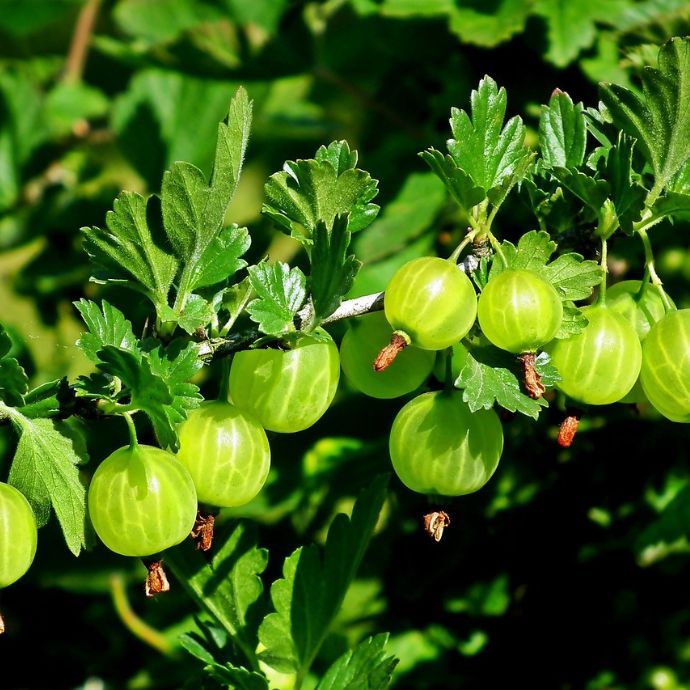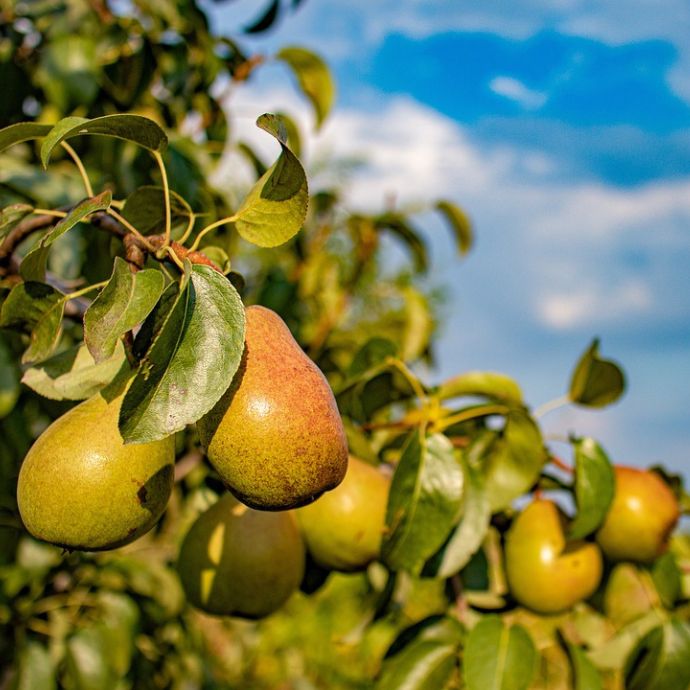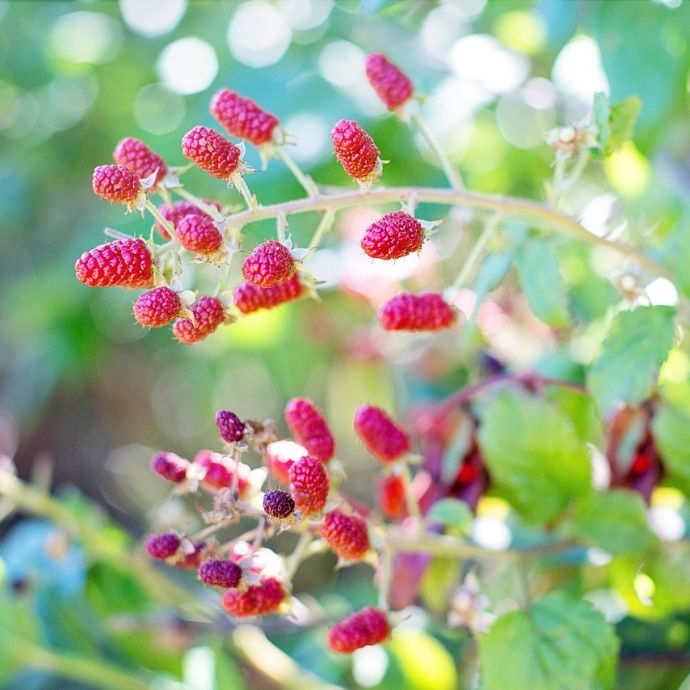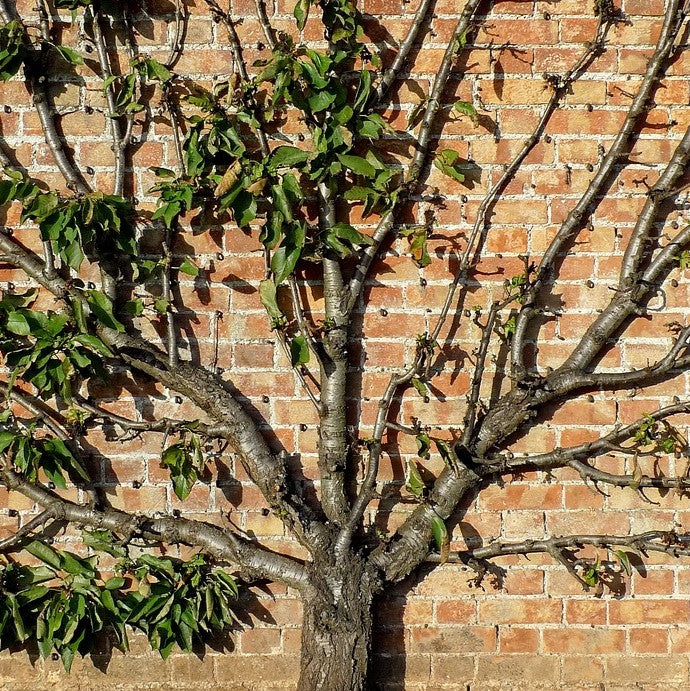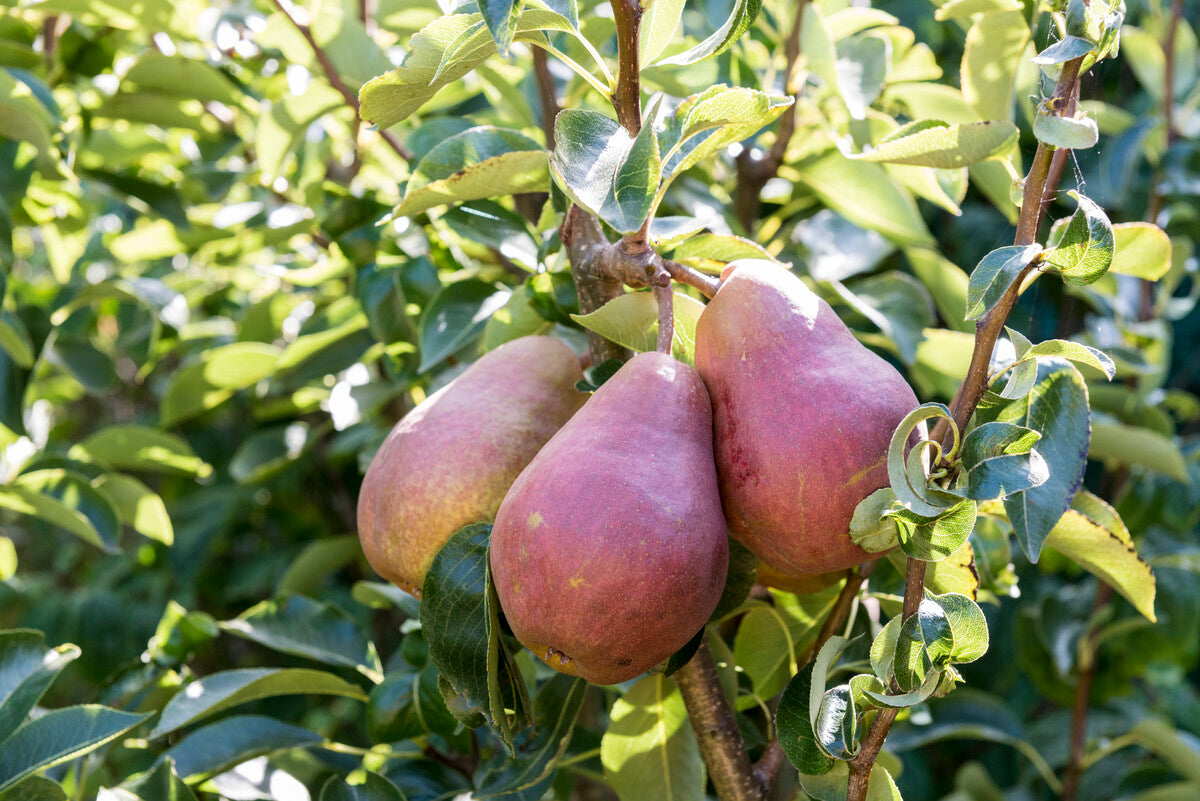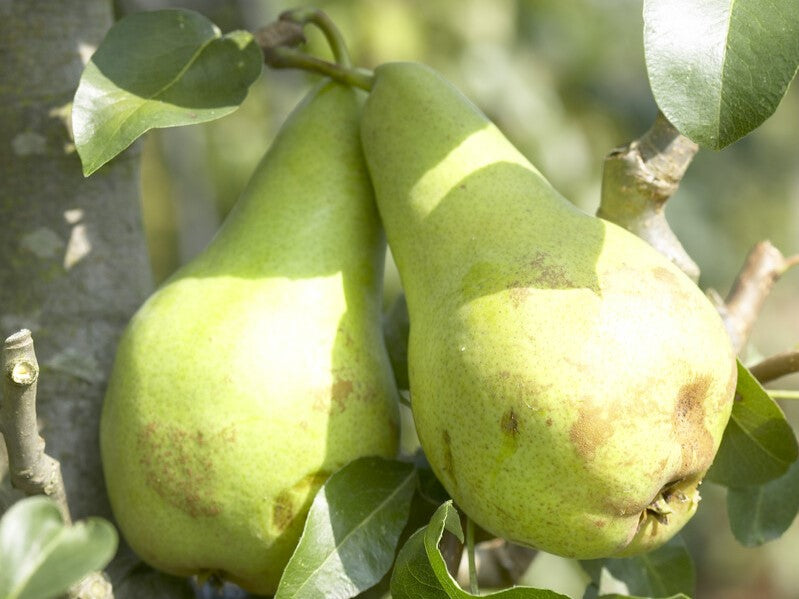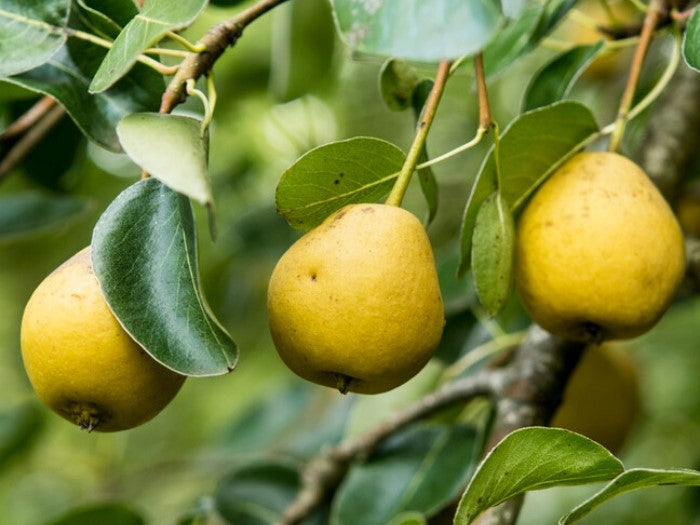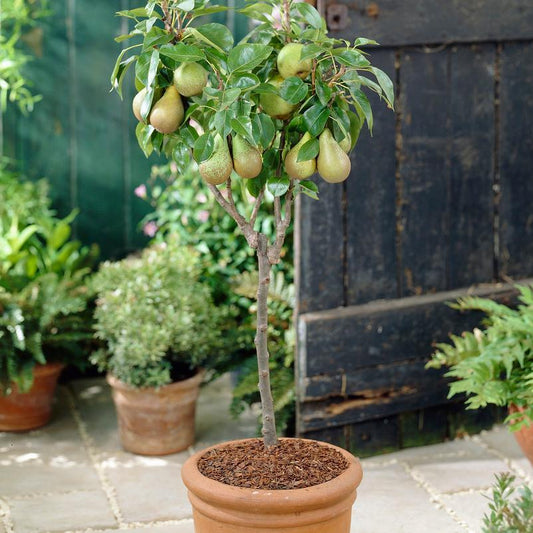The Best Pear Trees (As Chosen by Our Growers)
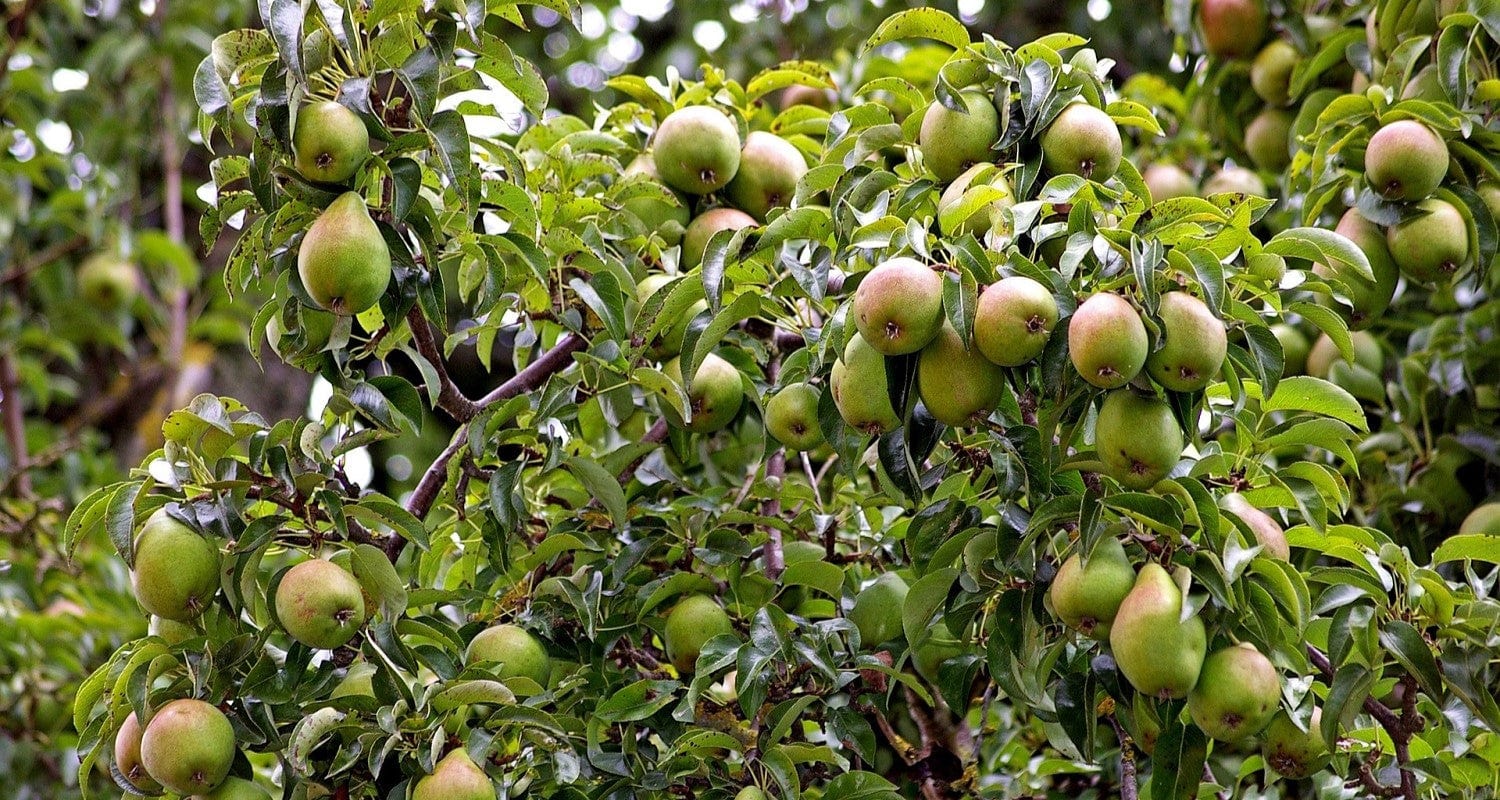
If you’re looking for a reliable fruit tree that’s easy to grow and perfectly adapted to the British weather, you can’t go wrong with a pear. Our head fruit tree grower, John, says “you’ll be fine with any pear tree, they’re one of the easiest and most reliable and they tend to be resistant to the diseases that a lot of fruit trees struggle with.” Along with apples, they’re also quicker to crop than most fruit trees, so you’ll get a good amount of fruit within just two years of planting. We asked our growers which pear varieties are the best for small spaces, colder areas and more, then got some insider tips on how to get the most from them.
Jump to:
- Best all rounder
- Best flavour
- Best for cooking
- Best for small gardens
- Best for colder areas
- Best for pots
- Best for training
- Best for storing
- How to get the most from your pear tree
Our growers’ recommendations
Best all rounder: 'Conference'
'Conference' is not only the UK’s favourite pear, but the easiest to grow. The flavour is delightful even when it’s not fully ripe and it’ll perform well anywhere, producing good crops within just two years. If you’re not sure which pear to pick, our growers reckon you won’t go wrong with this one - it also comes in more sizes than other pears, so you can grow it as a full sized tree, a space saving cordon or a dwarf tree in a patio pot.
Best for flavour: 'Beurré Hardy'
'Beurré Hardy' is a delicious heritage dessert pear with nice russeting and superb flavour. With creamy-white soft, melt-in-the-mouth flesh and a predominantly sweet flavour - with just the right hint of aromatic rose - it’s equally good eaten fresh from the tree, poached or baked. An RHS award winner, it’s a strong and reliable cropper which is ready to pick from late September.
Best for cooking: 'Green Williams'
'Green Williams' pears are a versatile variety which are delicious eaten straight from the garden, but chefs swear by them for cooking (check out Jamie Oliver’s poached pear recipe). Originating from the 1700s, 'Green Williams' (or as it’s known in the US, 'Bartlett') is the variety used for tinned pears as it keeps its juiciness and holds its shape best when cooked or preserved.
Best for small gardens: 'Red Williams'
Pretty much any pear tree can be kept small by pruning, but we’d recommend a variety you may not have considered - the 'Red Williams'. It’s got all the juicy sweetness and versatility of its green cousin, but has a slightly more dwarfing habit which means it grows to just 3x3m while producing plenty of fruit in a small space. Smaller trees = easier picking and less pruning, what’s not to love?
Best for colder areas: 'Concorde'
Not saying it’s grim up North, but if you live in one of the more exposed parts of the UK, it’s best to choose a pear tree that can handle the cold. 'Concorde' pears not only laugh in the face of dropping mercury, they cleverly blossom later to avoid the frosts, ripening from late September to October. The plentiful fruits have the vanilla-sweet flavour of a 'Doyenne du Comice', but are easier to grow.
Best for growing in pots: Patio Pear Tree
Our patio pear trees offer big flavour from small spaces! Grafted onto a dwarfing rootstock and professionally pruned, these bite-sized plants are ideal for gardens where space comes at a premium. Whether you grow them in the open ground or in pots, these trees will reach an ultimate height of just 1.5m (or so). The fruits are perfect for a centrepiece tarte tatin à la Gordon Ramsey.
Best for training: 'Doyenne du Comice'
If you want to train a pear tree as a cordon, fan, espalier or stepover, you need a spur bearing variety on Quince A rootstock. 'Doyenne du Comice' fits the bill in practical terms and because it’s a picturesque heritage variety with a rich, aromatic flavour, it’ll be worth the effort. 'Doyenne du Comice' is also late flowering so does well in colder areas.
Best for storing: 'Kumoi'
Nashi pears like 'Kumoi' are a bit different - they’re the shape of an apple with a crisp bite and a honeyed, sweet flavour. Originating from China, they perform exceptionally well in the UK climate. But here’s the clincher - if you store them in the fridge after harvesting, they will last for several months. Not a typo.
How to get the best from your pear tree
1. Position
A pear tree needs plenty of sun to ripen its fruit, so choose a planting position that gets at least six hours of sunlight daily and is sheltered from strong winds and frost. A sunny border next to a wall is perfect, as is the lawn or even a sunny patio if you’re growing in a pot. Your tree will be happiest in deep, well-drained and fertile soil.
2. Pruning
You can leave your pear tree to grow naturally, but a little pruning each year can help to keep it healthier, better looking and more productive. Always prune between November and March when the tree is dormant (not growing).
Firstly, prune out any branches that are growing towards the middle of the tree instead of outwards - these won’t get enough sun to develop fruit and will crowd out the other branches. Then remove any branches that are dead, diseased or dying.
Finally, trim all but the main branches, cutting down to about six buds on each stem. Once your tree is fully established after 2-3 years, you can cut the main branches back by about a third each year, which will keep your tree to a manageable size.
If you’re up for a challenge, why not try training your pear tree?
3. Feeding
Your pear tree will benefit from a yearly feed with general purpose or nitrogen-rich fertiliser in early spring, which will help the blossom and fruit develop. You can also give it a boost by mulching around the base of the tree in autumn/winter with compost or manure.
4. Watering
When your tree is newly planted, water it regularly for about the first year until it’s had time to establish a mature root system. After that, water weekly throughout the spring and summer, giving your tree extra water in hot, dry weather. Always water at the base of the tree and avoid splashing the leaves, to prevent the spread of mildews and fungal diseases. Fruit trees in pots will need more regular watering.
5. Harvesting
Different varieties of pears ripen at different times, but they all ripen sometime between August and October. It’s important to pick the pears before they are fully ripe, as if you leave them to ripen on the tree, they’ll ripen from the inside out, which makes them go mushy and grainy. To harvest your pears, hold the fruit in your hand and lift it up gently, twisting gently. If the fruit comes away easily, it’s ready. If your pears are already soft, eat them straight away. If they’re still firm, leave them to ripen in the fruit bowl for a couple of days.
Last updated: 08/01/2026



